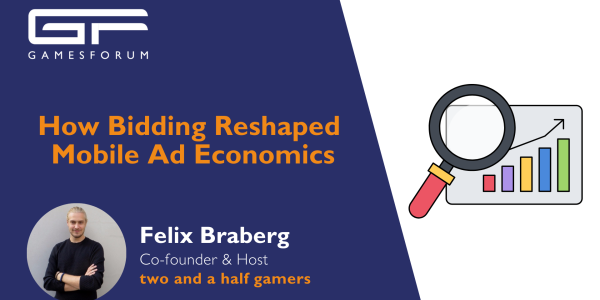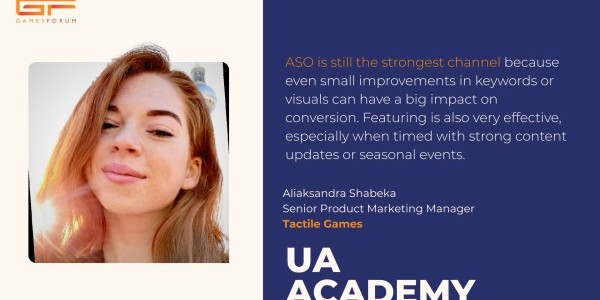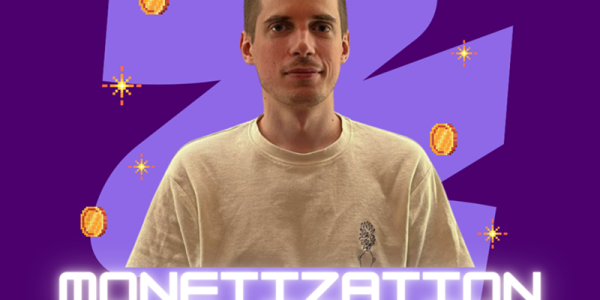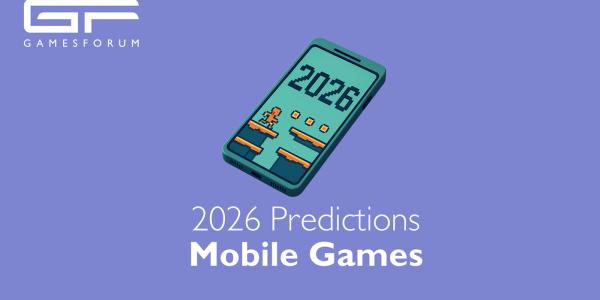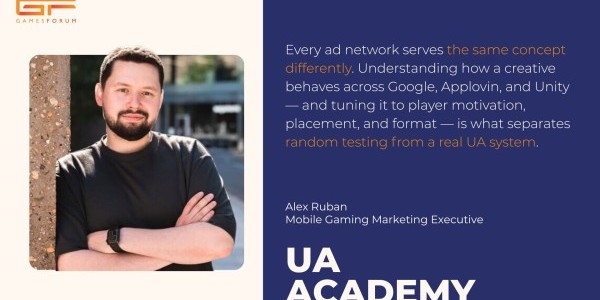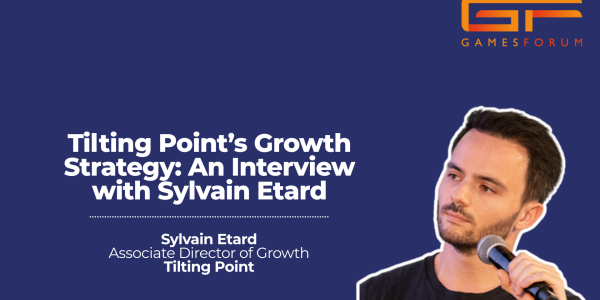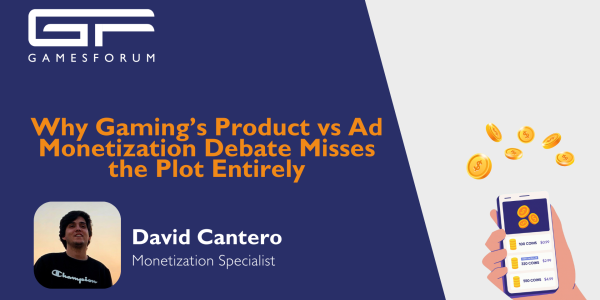From Warner Bros to PubRev+: Charlie Castell’s Journey and the Hard Truths of Monetizing Mobile Games in a Crowded Market

Charlie Castell's path to founding PubRev+ is a masterclass in navigating the ever-evolving world of mobile game monetization. From pioneering ad strategies for TMZ and Ellen to building adops departments from the ground up, Charlie has seen it all. Now, he’s sharing the hard-learned lessons and harsh realities that mobile game developers - especially indie creators - need to know to survive, and thrive, in today’s market.
Charlie, could you tell us a little bit about your journey in mobile gaming and what inspired you to create PubRev+?
About 14 years ago, I joined Warner Bros. to help with the product management for TMZ and Ellen. At the time, my boss had the idea to put ads into the apps. So she and I worked on getting the ad networks set up, which were basically Millennial Media and Admob at the time. When she left, I was the only person at the studio who knew anything about in-app advertising. Over the next year or so, all the different departments of the studio would come and ask me how to add SDKs and set up mediation for apps. I got to work with lots of different developers and ad networks and mediation platforms, as they were all courting the studio’s business.
After WB, I went to a (then unknown) company called Scopely as their first ad ops hire. Over the next few years, I hired a team and was able to build a really strong adops department and put in place lots of good processes. I had the pleasure of working with amazing engineers, and learnt a lot of adops engineering and troubleshooting, which gave me a really strong foundation in how to increase revenues through good engineering. When I joined TextNow, I was able to leverage that ads engineering knowledge to drastically increase their ads revenue very quickly. In 2018 I decided that it was time to start my own company and help more publishers increase their ads revenue - and of course, work for myself.
PubRev+ has a strong focus on optimizing ad revenue for publishers. What are the key steps you take to identify and capitalize on missed monetization opportunities within a game?
At PubRev+, just as I learnt at my prior companies, we emphasise ads engineering, as a central piece of adops. The other two parts are operations (server side), and business development / product. It’s amazing how much missed revenue can be found by good ads engineering and housekeeping.
In the development of PubRev+ games, what are some of the most innovative monetization techniques you’ve implemented that have had a significant impact on revenue without compromising user experience?
I’ve always been amazed that our industry hasn’t worked out how to fulfill the needs of the advertiser, the publisher and the user. It’s as if there is this conflict at all times - there doesn’t need to be. Our first game Rebuild Ukraine, was built specifically to help on the ground charities in Ukraine.
One of the ways we monetize is in-app advertising, and we donate 50% of the proceeds from ad monetization to World Central Kitchen and Save The Children. And so the pitch to users is simple: spend some time in our game and you are earning money for these charities. If you want to donate more directly, you can, but just by playing you are helping Ukraine. Advertisers love it, because they get to show they are values driven, users love it, because they get to help Ukraine and play a game that aligns with their values, and of course as a publisher we love it, because we can use our skillset to make a positive impact in the world.
How do you ensure that monetization efforts, such as in-game ads or purchases, do not negatively impact user engagement and retention? Can you share specific strategies that have worked well for PubRev+?
That’s really all about A/B testing. Every monetization loop and economy that is added to a game needs to be tested against retention, revenue and usage metrics.
Either building or working with a good A/B testing platform can save you a lot of time, because you are moving the decisions about monetization from an emotional to a data-driven place.
How do you plan for long-term monetization success in PubRev+ games? What metrics or indicators do you prioritize when evaluating the sustainability of a monetization strategy?
To test the viability of a game, the key is retention. If the D1 retention is not up to par for that type of game, then we know we either need to do more, or the game itself just isn’t going to work.
In terms of monetization itself, we use retention and other usage metrics to make choices about that monetization loop. Again, it’s all A/B testing. Sometimes you can find that ads drives people to take other valuable actions that you never thought would be correlated.
As an expert in both game development and monetization, what do you believe are the biggest challenges and opportunities in today’s mobile gaming market, especially for indie developers trying to implement effective monetization strategies?
There are lots of challenges.
The convergence of mediation platforms has really hurt the industry, and there is a lot of obfuscation of the auction and reporting. Mediation used to be open source code, so publishers had a lot more control, but now it is handled by the mediation provider, who can choose to obfuscate, in order to make greater margin if they want.
Bidding has also essentially meant any publisher can monetize the same as the next publisher. That sounds great on paper, but what if you are investing more resources into your product and engineering than your competitors, but bidding means you have more limited in what you can do with your ad operations, and so your ads revenue cannot support your extra overhead? It used to be that indie developers, by investing modestly in ad operations, could make the transition from indie to mid-range publisher, and continue to grow. But now, publishers have to invest a lot more to get to that next level. And that’s hard when you’re an indie developer. You have to be very strategic about choosing your ads operations partners - that’s why we believe we still offer a very effective service for publishers, because we have been specialising in monetization since the beginning of the app store.
The SPO cleaning house that TTD has been doing on the demand has meant that a lot of SSPs have had a more difficult time bringing demand to publishers, and any resellers, who have a place in the industry, also have had a harder time. My feeling is that publishers should be allowed to choose if they want to sell only through direct advertisers or add resellers, which will get them more fill, but over time may decrease their CPM. The problem is that no one can A/B test having more resellers or no resellers, so no one really knows if inventory is commoditized by the more demand sources selling your inventory.
At the macro level, CPMs are going down, because budgets haven’t come back after Covid as much as people thought they would. This political season has been very strange in terms of when spend has come. All campaigns are waiting until the second week of October to really open up spend - which is possibly the most wasteful strategy you can possibly have when it comes to buying media.
Ad quality is the other big problem that publishers face. Ad networks have been in an arms race to get the best click rates. And we all know what that means., We’ve all seen the creatives. The x buttons you can’t click on etc. There is no one policing the networks. And UA teams at publishers are paying for false clicks on their attribution window. I’m going to sound like a broken record, but without organising as a group, nothing will get done. If publishers just moan and do nothing then they will continue to have terrible ads show up in their games and cause users to churn.
Based on your experience with PubRev+, what emerging trends do you foresee in game monetization, and how should developers and advertisers prepare for these trends?
Margins are only going to get tougher for publishers, as long as we only have a few mediation platforms and the major ad networks use bidding.
I’m going to go out on a limb and say that bidding is going to get phased out, once enough publishers realise that it has been hurting their ads monetization so badly. Fill rate increases, but revenue stays the same. That means you are serving more ads (more churn, and more battery consumption), at lower CPMs, which means lower LTV.
I think the SPO purge will die in the next few years, and publishers will be able to sell their inventory through resellers again if they want to. That’s either a good thing, or a bad thing, depending on how you look at it. That means there will be more fill at the lower end of the waterfall. Bidding has already meant that all the major networks are buying as low as they can anyway, so more resellers will mean there is more competition to drive the major networks’ CPMs higher.
Like most publishers, I don’t like the idea of the DSPs reselling my inventory, but I also see that the extra buyers means that other unsold inventory can be better monetized. There is a point of diminishing return, and each publisher will have to make their own decisions about when that is.

